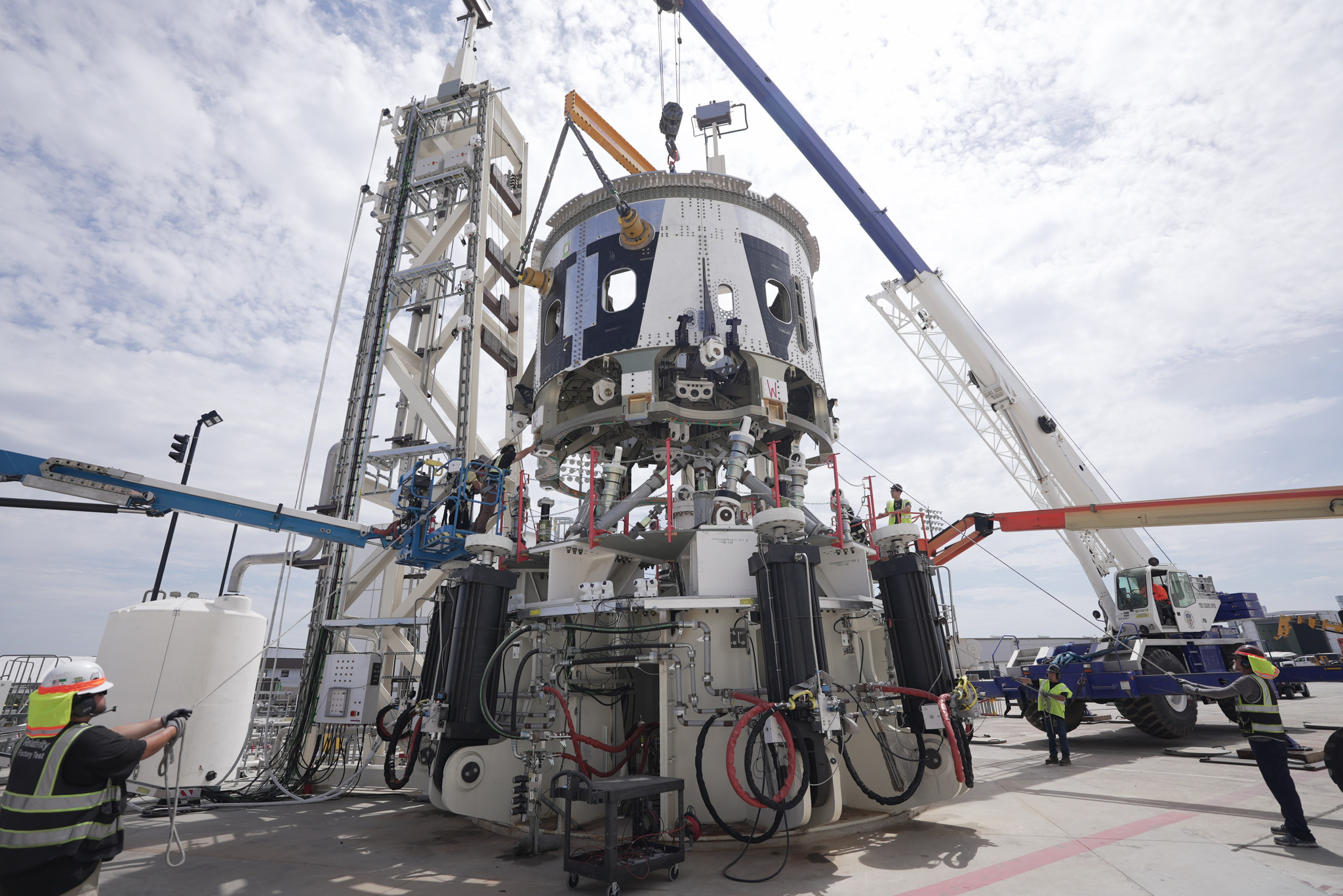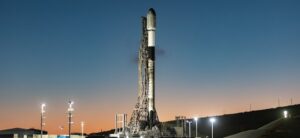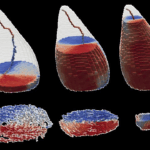Now Reading: Relativity Space Readies Terran R Rocket for 2026 Launch as Competition Intensifies
-
01
Relativity Space Readies Terran R Rocket for 2026 Launch as Competition Intensifies
Relativity Space Readies Terran R Rocket for 2026 Launch as Competition Intensifies


As SpaceX’s Falcon rockets continue to set benchmarks for reusable spaceflight, other companies are entering the arena, vying to take a slice of the burgeoning launch market. Among these challengers is Relativity Space, which is making significant strides toward the debut of its Terran R rocket, now slated for its initial flight in late 2026.
Currently, the construction of the first Terran R prototype is well underway, having recently seen the completion of vital components. Notably, the thrust section—integral to the rocket’s lower half where its engines are mounted—was finalized earlier this month. Additionally, the company has completed all eight barrels that comprise the first stage’s structure and has produced the first pair of Aeon R engines intended for flight.
Crafted from advanced aluminum alloys, the thrust section is considered one of the most intricate elements of the rocket. Following its assembly, this section underwent a rigorous testing process at a newly established test stand in Long Beach, California, where it showcased remarkable durability by withstanding up to 3.7 million pounds of force during various tests designed to replicate the stresses experienced during a launch.
In a recent social media update, Relativity Space announced the completion of the thrust structure’s build along with the commencement of testing on their new stand. The tests aimed to verify that the thrust structure could endure the maximum dynamic pressure during flight and the intense stresses of static firing. The upcoming integration of this thrust structure with the overall vehicle has already begun as the team adds necessary components such as brackets and avionics.
Construction progress has not only been limited to the thrust section. The first stage’s body is taking shape as well, with all eight structural barrels now welded together. Meanwhile, work is advancing on the second stage, with its tank sections nearing completion. The Terran R’s design incorporates a combination of traditional manufacturing techniques and previously used 3D printing methods that were key to its predecessor, the Terran 1.
In another significant achievement, the Aeon R vacuum engines have also been in the spotlight. Testing for the first operational Aeon R has already commenced, featuring static fire tests that closely mirror the burn time expected during a launch. This engine will play a pivotal role in the Terran R’s ascent, and recent tests have even seen the engine operate using densified liquid oxygen, a technology previously exclusive to SpaceX’s aircraft.
As the project matures, the team at Relativity Space has been diligently conducting critical design reviews—18 were completed in August alone—to ensure all components meet their specifications before they enter production. With the second stage components now in production, the company is aiming for a streamlined assembly process, essential for future flight schedules.
Progress extends beyond the rocket itself, with updates emerging from Relativity’s launch complex at Cape Canaveral Space Force Station. Winter is bringing expectations for Remodeling Launch Complex-16, which recently witnessed the installation of two large liquid oxygen tanks, crucial for supporting the upcoming Terran R flights. The new infrastructure represents a strategic upgrade, designed to accommodate the ambitious launch rate envisioned for the future.
Though challenges remain ahead as the company gears up for Terran R’s maiden flight, which remains tentatively set for late 2026, Relativity Space is positioning itself within the competitive landscape of commercial launch providers. With its capabilities to transport up to 23,500 kilograms to low-Earth orbit in a reusable setup, the Terran R aims to stake its claim among rivals like SpaceX’s Falcon 9 and other forthcoming vehicles like the Neutron and New Glenn.
Stay Informed With the Latest & Most Important News
Previous Post
Next Post
-
 012024 in Review: Highlights from NASA in Silicon Valley
012024 in Review: Highlights from NASA in Silicon Valley -
 02Panasonic Leica Summilux DG 15mm f/1.7 ASPH review
02Panasonic Leica Summilux DG 15mm f/1.7 ASPH review -
 03How New NASA, India Earth Satellite NISAR Will See Earth
03How New NASA, India Earth Satellite NISAR Will See Earth -
 04And Thus Begins A New Year For Life On Earth
04And Thus Begins A New Year For Life On Earth -
 05Astronomy Activation Ambassadors: A New Era
05Astronomy Activation Ambassadors: A New Era -
06SpaceX launch surge helps set new global launch record in 2024
-
 07Space Force plans new ‘Futures Command’ amid pressure to speed up modernization
07Space Force plans new ‘Futures Command’ amid pressure to speed up modernization




















